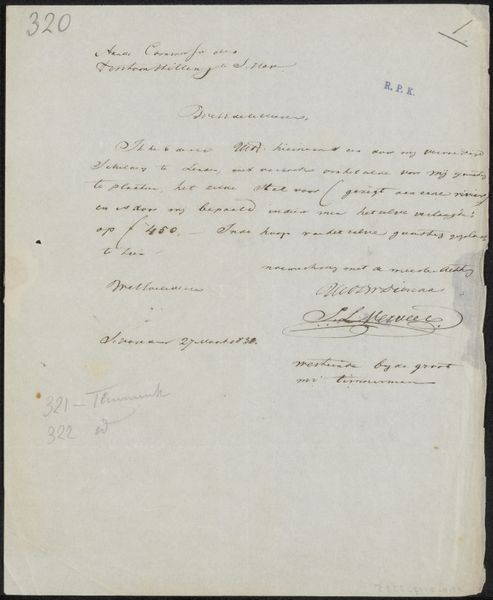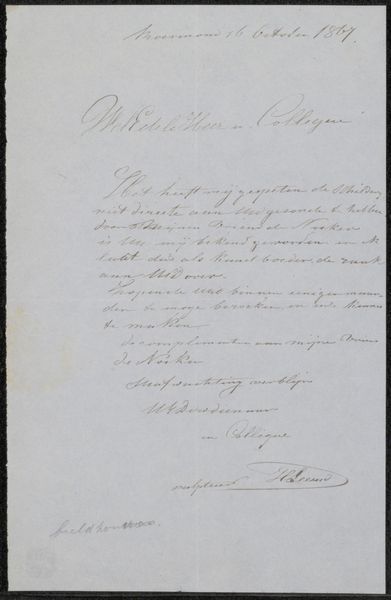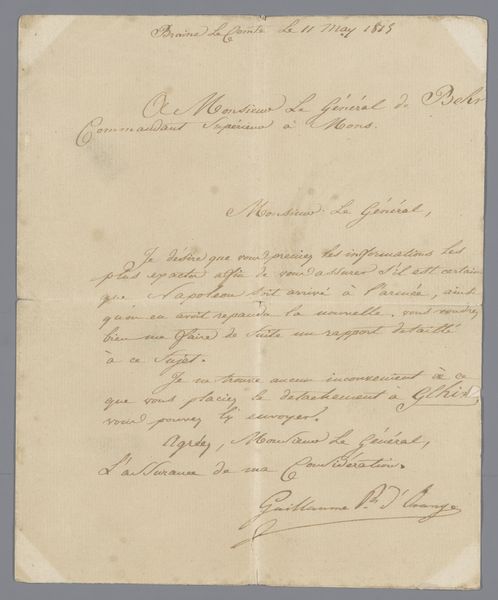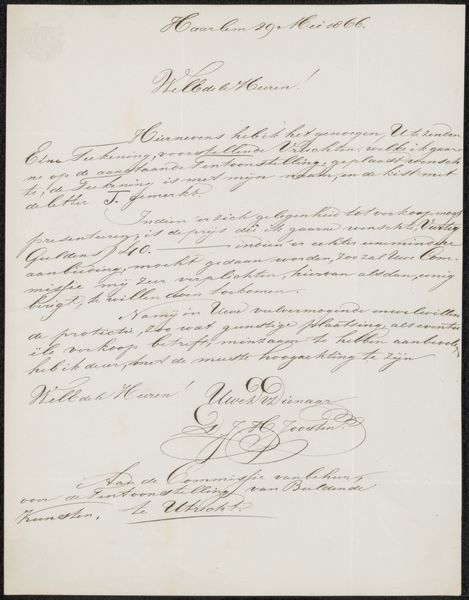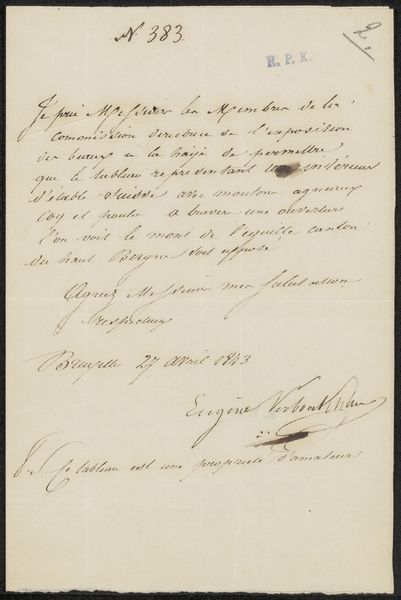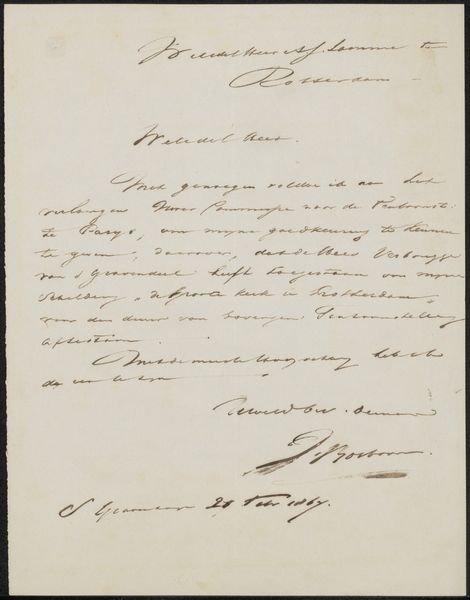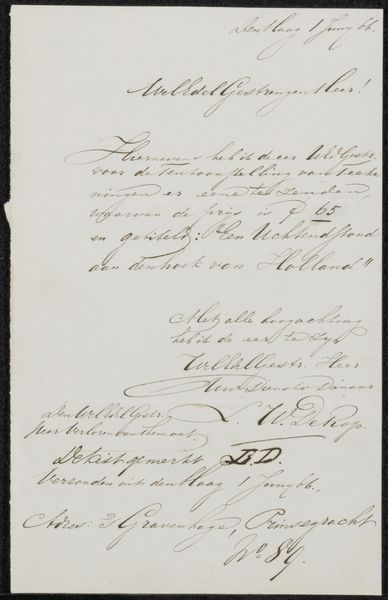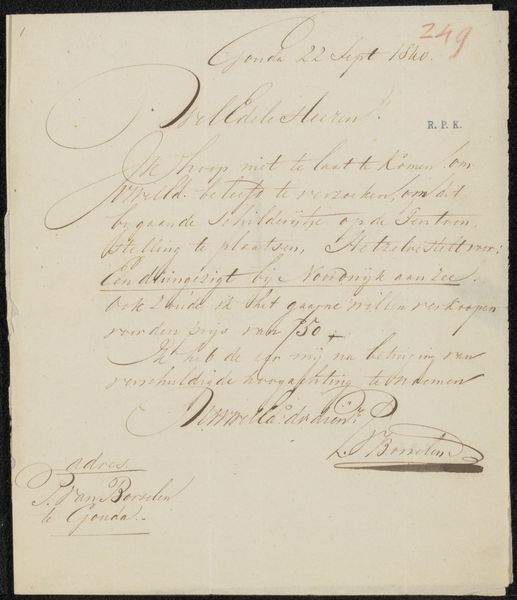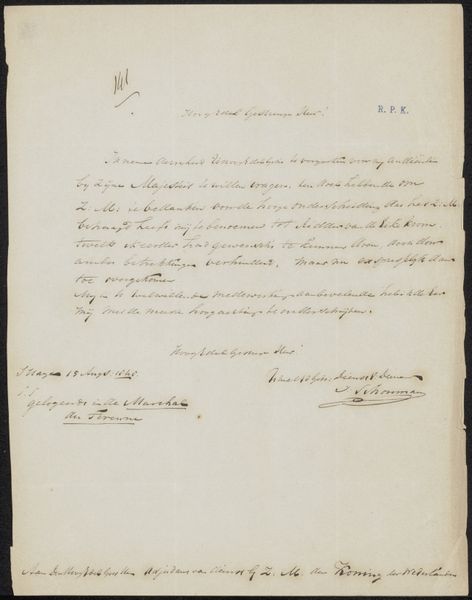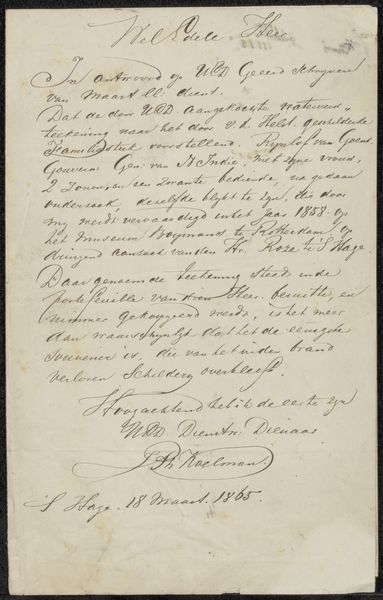
drawing, paper, ink, pen
#
drawing
#
ink painting
#
paper
#
ink
#
romanticism
#
pen work
#
pen
Copyright: Rijks Museum: Open Domain
Dominique Ducaju composed this letter around 1825. At first glance, the elegant calligraphy leaps out, forming a tapestry of loops and lines against the aged paper. The brown ink, faded with time, creates a delicate contrast, evoking a sense of intimacy and history. Ducaju’s manipulation of line and form goes beyond mere writing. The flourishes, signatures, and carefully spaced words create a composition of visual weight and rhythm. The letter isn't just a means of communication; it is a structured arrangement of linguistic and artistic elements. Consider how the handwritten script defies standardized forms. Each stroke is imbued with a personal touch. This challenges notions of fixed meanings, where language becomes fluid, subjective, and deeply connected to the individual. The letter is a semiotic field where words act as signs, hinting at layers of meaning and social codes. It invites us to contemplate the relationship between artistic expression, language, and personal identity.
Comments
No comments
Be the first to comment and join the conversation on the ultimate creative platform.
